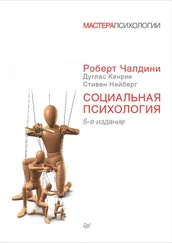Lewin, R. (1992). Complexity: Life at the edge of chaos. New York, NY: Macmillan.
Li, N. P., Bailey, J. M., Kenrick, D. T., & Linsenmeier, J. A. (2002). The necessities and luxuries of mate preferences: Testing the trade-offs. Journalof Personality & Social Psychology, 82, 947-955.
Li, N. P., & Kenrick, D. T. (2006). Sex similarities and differences in preferences for short-term mates: What, whether, and why. Journal of Personality & Social Psychology, 90, 468-489.
Li, Y. J., Cohen, A. B., Weeden, J., & Kenrick, D. T. (2010). Mating competitors increase religious beliefs.Journal of Experimental Social Psychology, 46, 428-431.
Li, Y. J., & Kenrick, D. T. (2010, January). Mating motives make men loss averse. Paper presented at Society for Personality & Social Psychology, Las Vegas, NV.
Lieberman, D., Tooby, J., & Cosmides, L. (2003). Does morality have a biological basis? An empirical test of the factors governing moral sentiments regarding incest. Proceedings of the Royal Society of London, B, 270, 819-826.
Lieberman, D., Tooby, J., & Cosmides, L. (2007). The architecture of human kin detection. Nature, 445 , 121-131.
Little, A. C., Jones, B. C., & DeBruine, L. M. (2008). Preferences for variation in masculinity in real male faces change across the menstrual cycle: Women prefer more masculine faces when they are more fertile. Personality & Individual Differences, 45, 478-482.
Lyubomirsky, S. (2007). The how of happiness: A scientific approach to getting the life you want. New York, NY: Penguin.
Lyubomirsky, S., & Boehm, J. K. (2010). Human motives, happiness, and the puzzle of parenthood: Commentary on Kenrick et al. (2010). Perspectives on Psychological Science, 5, 327-334.
MacDonald, G., & Leary, M. R. (2005). Why does social exclusion hurt? The relationship between social and physical pain. Psychological Bulletin, 131 , 202-223.
Maner, J. K., Kenrick, D. T., Becker, D. V., Delton, A. W., Hofer, B., Wilbur, C. J., & Neuberg, S. L. (2003). Sexually selective cognition: Beauty captures the mind of the beholder .Journal of Personality & Social Psychology, 6, 1107-1120
Maner, J. K., Kenrick, D. T., Becker, D. V., Robertson, T. E., Hofer, B., Neuberg, S. L., Delton, A. W., Butner, J., & Schaller, M. (2005). Functional projection: How fundamental social motives can bias interpersonal perception. Journal of Personality & Social Psychology, 88, 63-78.
Markus, H., & Zajonc, R. B. (1985). The cognitive perspective in social psychology. In G. Lindzey & E. Aronson (Eds.), Handbook of social psychology (Vol. 1, pp. 137-230). New York, NY: Random House.
Martindale, C. (1980). Subselves. In L. Wheeler (Ed.), Review of personality and social psychology (pp. 193-218). Beverly Hills, CA: Sage.
Maslow, А. Н. (1943). A theory of human motivation. Psychological Review, 50, 370-396.
Maslow, A. H. (1970). Motivation and personality (2nd ed.). New York, NY: Harper & Row.
Masters, W. H., & Johnson, V. E. (1970). Human sexual inadequacy. Toronto; New York: Bantam Books.
McIntyre, M., Gangestad, S. W., Gray, P. B., Chapman, J. E, Burnham, T. C., O’Rourke, M. T., & Thornhill, R. (2006). Romantic involvement often reduces men’s testosterone levels—but not always: The moderating role of extrapair sexual interest ./оштш/ of Personality & Social Psychology, 91, 642-651.
Miller, G. E (2000). The mating mind: How sexual choice shaped the evolution of human nature. London, England: Heinemann.
Miller, N., & Dollard, J. (1941). Social learning and imitation. New Haven, CT: Yale University Press.
Muller, M. (2007). Chimpanzee violence: Femmes fatales. Current Biology, 17, R365-R366.
Mulvihill, D. J., Tumin, M. M., & Curtis, L. A. (1969). Crimes of violence (Vol. 2). Washington, DC: Government Printing Office.
Myers, D. G. (2009). Psychology in everyday life. New York, NY: Worth.
Nairne, J. S. (2003). Psychology: The adaptive mind. Belmont, CA: Wadsworth.
Navarrete, C. D., & Fessler, D. M. T. (2006). Disease avoidance and ethnocentrism: The effects of disease vulnerability and disgust sensitivity on intergroup attitudes. Evolution & Human Behavior, 27, 270-282.
Navarrete, C. D., Fessler, D. M. T, & Eng, S. J. (2007). Elevated ethnocentrism in the first trimester of pregnancy. Evolution & Human Behavior, 28, 60-65.
Navarrete, C. D., Olsson, A., Ho, A. K., Mendes, W. B., Thomsen, L., & Sidanius, J. (2009). Fear extinction to an out-group face: The role of target gender. Psychological Science, 20, 155-158.
Neuberg, S. L, Kenrick, D. T, & Schaller, M. (2010). Evolutionary social psychology. In S. T. Fiske, D. T. Gilbert, & G. Lindzey (Eds.), Handbook of Social Psychology (5th ed., Vol. 2, pp. 761-796). New York, NY: Wiley & Sons.
Nowak, A., & Vallacher, R. R. (1998). Dynamical social psychology. New York, NY: Guilford Press.
Nowak, A., Vallacher, R. R., Tesser, A., & Borkowski, W. (2000). Society of self: The emergence of collective properties in self-structure. Psychological Review, 107, 39-61.
Ohman, A., Lundqvist, D., & Esteves, F. (2001). The face in the crowd revisited: A threat advantage with schematic stimuli./омттш/ of Personality & Social Psychology, 80, 381-396.
Ohman, A., & Mineka, S. (2001). Fears, phobias, and preparedness: Toward an evolved module of fear and fear learning. Psychological Review, 108, 483-522.
Otta, E., Queiroz, R. D. S., Campos, L. D. S., daSilva, M. W. D., & Silveira, M. T. (1998). Age differences between spouses in a Brazilian marriage sample. Evolution & Human Behavior ; 20, 99-103.
Park, J. H., Faulkner, J., & Schaller, M. (2003). Evolved disease-avoidance processes and contemporary anti-social behavior: Prejudicial attitudes and avoidance of people with physical disabilities. Journal of Nonverbal Behavior, 27, 65-87.
Penn, D. J. (2003). The evolutionary roots of our environmental problems: Toward a Darwinian ecology. Quarterly Review of Biology, 78, 275-301.
Penton-Voak, L S., Perrett, D. I., Castles, D. L., Kobayashi, T, Burt, D. M., Murray, L. K., et al. (1999). Menstrual cycle alters face preference. Nature, 399, 741-742.
Peplau, L. A., & Gordon, S. L. (1985). Women and men in love: Gender differences in heterosexual relationships. In V. E. O'Leary, R. K. Unger, & B. S. Wallston (Eds.), Women, gender, and social psychology (pp. 257-291). Hillsdale, NJ: Erlbaum.
Peterson, C., & Park, N. (2010). What happened to self-actualization? Commentary on Kenrick et al. (2010). Perspectives on Psychological Science, 5, 320-322.
Phelps, E. A., O’Connor, K. J., Cunningham, W. A., Funayama, E. S., Gatenby, J. C., Gore, J. C., & Banaji, M. R. (2000). Performance on indirect measures of race evaluation predicts amygdala activation. Journal of Cognitive Neuroscience, 12, 729-738.
Pinker, S. (1994). The language instinct. New York, NY: HarperCollins.
Pinker, S. (1997). How the mind works. New York, NY: Norton.
Pinker, S. (2002). The blank slate. New York, NY: Viking Penguin.
Pirsig, R. (1974). Zen and the art of motorcycle maintenance: An inquiry into values. New York, NY: William Morrow.
Presser, H. B. (1975). Age differences between spouses: Trends, patterns, and social implications. American Behavioral Scientist, 19, 190-205.
Profet, M. (1992). Pregnancy sickness as adaptation: A deterrent to maternal ingestion of teratogens. In J. H. Barkow, L. Cosmides, & J. Tooby (Eds.), The adapted mind: Evolutionary psychology and the generation of culture (pp. 327-366). New York, NY: Oxford University Press.
Читать дальше












